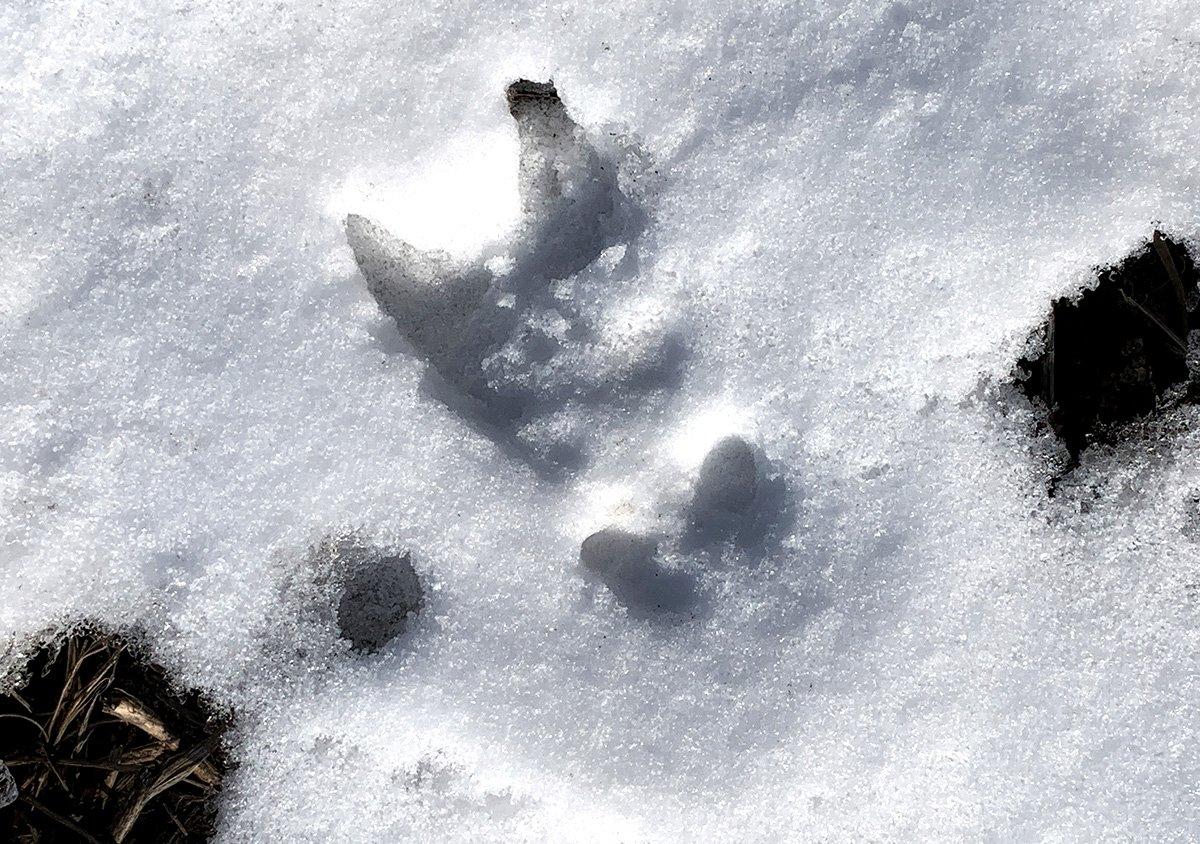A little postseason reconnaissance now, and in February too, lays the ground work for killing a big buck next fall
It was a gray, bone-chilling evening, one of the last of the Virginia gun season. Steve Reynolds was fixing to climb down from his stand and call it a year when he looked up and saw a 150-inch buck inching out into the plot of brassicas he was watching.
Boom! Steve's .270 roared and he tagged the biggest buck he'd ever seen on his farm.
(Don't Miss: The Best Shot Placement on Deer)
The more Steve pondered his good fortune, the more curious he became. That was the first time he'd ever seen the buck, which was at least 4 years old, maybe 5. He'd gotten no camera images of him, either, not one.
Where had the buck come from? How had the deer approached the plot? Where had he been living, eating, bedding, and hiding? The next day Steve went back out to the kill site for some answers.
Boom! Steve's .270 roared and he tagged the biggest buck he'd ever seen on his farm.
He picked up the buck's track in the snow and followed it a mile back in the woods. He saw how the animal had walked toward the plot with his nose into the northwest wind. Steve noticed how the deer had approached the green plot without exposing himself once in the timber. The 10-pointer had zigged, zagged, and used ridges, draws, and the last standing brush to stay hidden all the time. Steve found several spots where the deer had stopped, hung out for a while, and looked and sniffed out into the plot for danger.
From the looks of the deer's tracks and how they circled back and forth into and across the wind and cover, Steve figured the old buck had pulled those tricks many times before. He knew every inch of his core area, and he had the smarts to stay hidden and survive under the hunter's nose for years.
You learn valuable information like that with just a few days of postseason scouting.
(Don't Miss: Three Giant Bucks in One Incredible Season)
Now is the time to go back out to the properties you hunted last fall. Go straight to your treestands. Hike out from them in ever-widening circles and search for deer sign. You will learn a lot about how deer used the terrain, structure, cover, and wind when traveling from bed to feed. You will find hidden pockets where bucks rubbed and scraped the most. You will learn if you need to move your stand 50 to 100 yards … or maybe you're in a good spot and should stay put. All this will double your chances of shooting a good buck when you come back to hunt those stands this fall.
Here's what to look for.
Deer Trails
Cut muddy, tramped-down trails and follow them as far as you can in the woods. They will all lead, if in a roundabout way, to food sources and bedding sites. The freshest trails in mud or snow will come and go to late-season food sources. The older, fainter trails you find are more important. They lead to and from food sources that deer hit back during the rut, when most of your hunting probably took place.
If you missed those trails by 100 yards or more when you hung your stands last fall, you might want to move them closer before next season.
As you follow the trails, note how they hug brush, cut through low spots, curve around fence corners — all potential funneling spots for deer and new treestand sets this fall. Use a compass and your instincts to visualize how bucks on those trails worked into and across the predominant wind, especially the closer they got to food sources and bedding areas. The more you can nail down how deer use the common winds in your area, the better you can set and tweak your stands.
(Don't Miss: 7 Next-Level Tips for the onX Hunt App)
Rubs and Scrapes
As you hike the trails, make a mental note of all the old rubs you see, especially the larger signposts. Big rubs were blazed by big deer last October or November. A cluster of rubs as thick as your calf is what you want to find. It's a sign that at least one big 8- or 10-pointer spent a lot of time in a core area of 100 to 300 acres. He or another mature rubber should be back there this fall.
In some parts of the country, notably the Midwest and Southeast, bucks show a preference for rubbing aromatic cedars and/or pines. Look for trends like that. For example, if you find that 70% of last fall's rubs were on evergreens, you're onto something. As you scout, veer over to investigate every green wood or strip, especially those near crop fields, oak flats, and creeks. You'll turn up more and more rubs in those spots. You'll know where bucks will likely hang out and blaze new rubs this fall, and you'll want to hang some stands there.
Look for a rub location pattern, too. Suppose you find twice as many scarred trees on the tops of ridges than on the sides or in draws. Well, the resident bucks are ridge toppers, and it reveals a travel pattern that they'll likely use from September through the late season. Work that into your plan and set most of your stands on ridges and hilltops.
(Don't Miss: 6 Killer Strategies for Late-Season Deer Hunting)
In moderate climates and after the snowmelt up North, old scrapes are visible into early spring. When you find multiple scrapes, look around and put yourself in a buck's hooves. Scan the woods and visualize how a buck prowled the area for does. See how he worked the wind, hugged brush, cut around points, skirted obstacles, etc. You might find great new funneling spots for stands.
Shed Antlers
As you hike the freshest, muddiest trails between winter feeding areas and bedding sites, look for just-cast antlers. Find a big chunk of 4- or 5-point bone (and both sides if you're lucky) and you know one thing — a shooter that you saw last season (or maybe you didn't see him) survived the hunting season. If he doesn't get hit by a car over the summer, there's a good chance he'll be on your land next season. It gives you something to dream about as you analyze all the old sign you found and work it into a fresh hunting plan for fall 2021.
(Don't Miss: How to Hunt Big Buck Bedding Areas)











